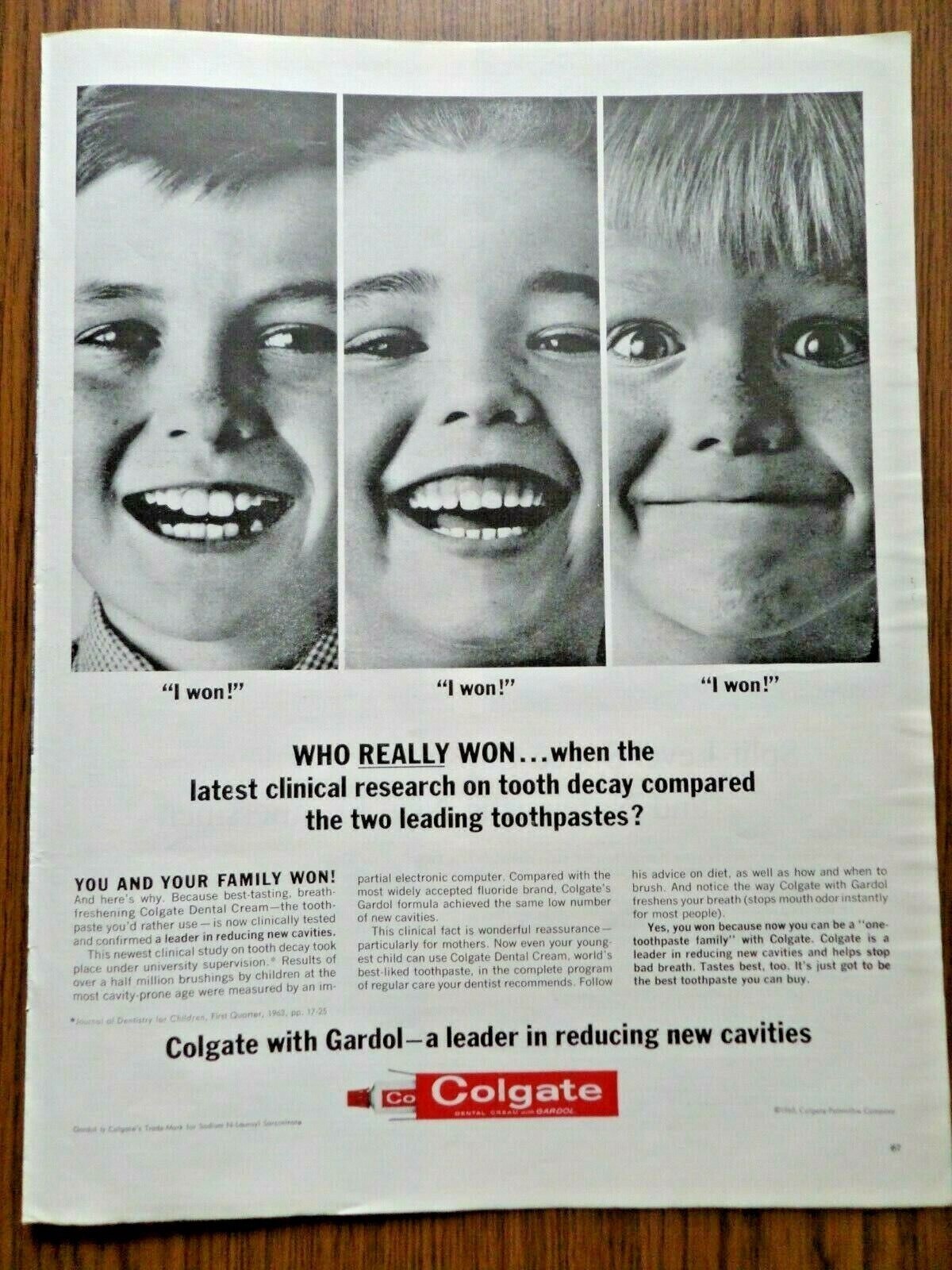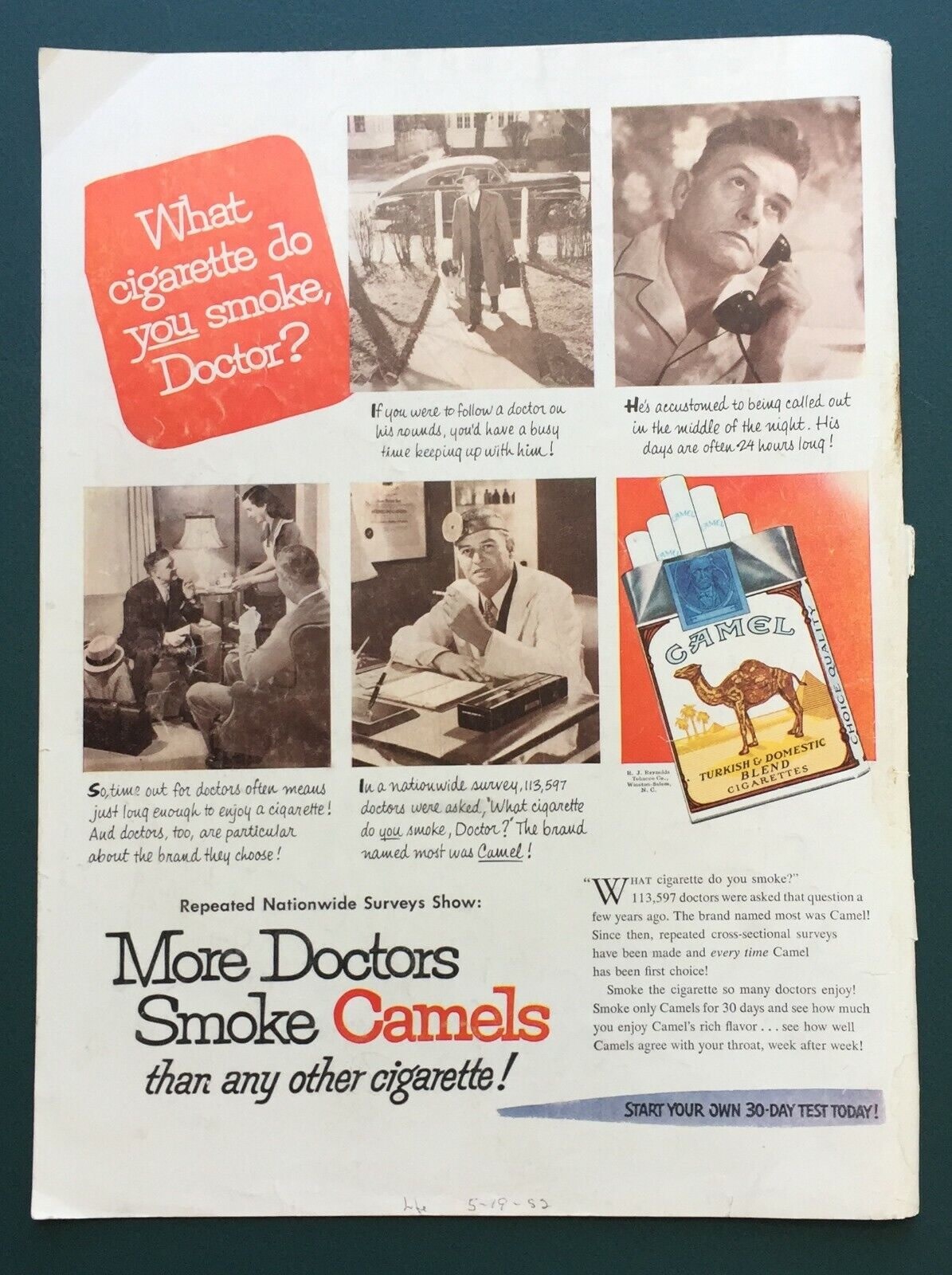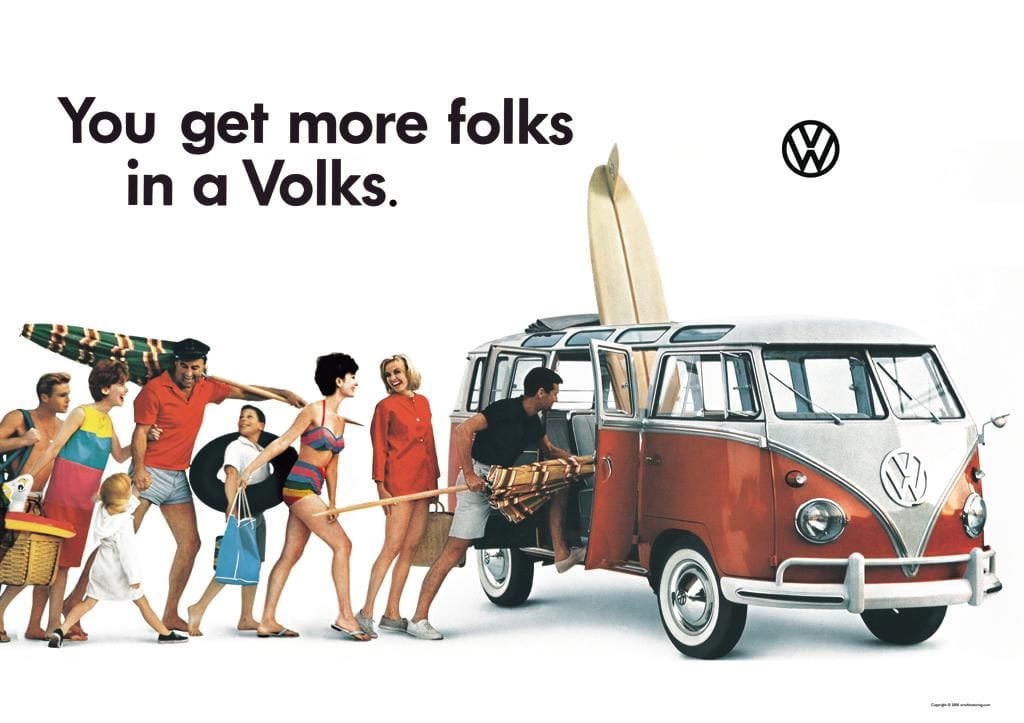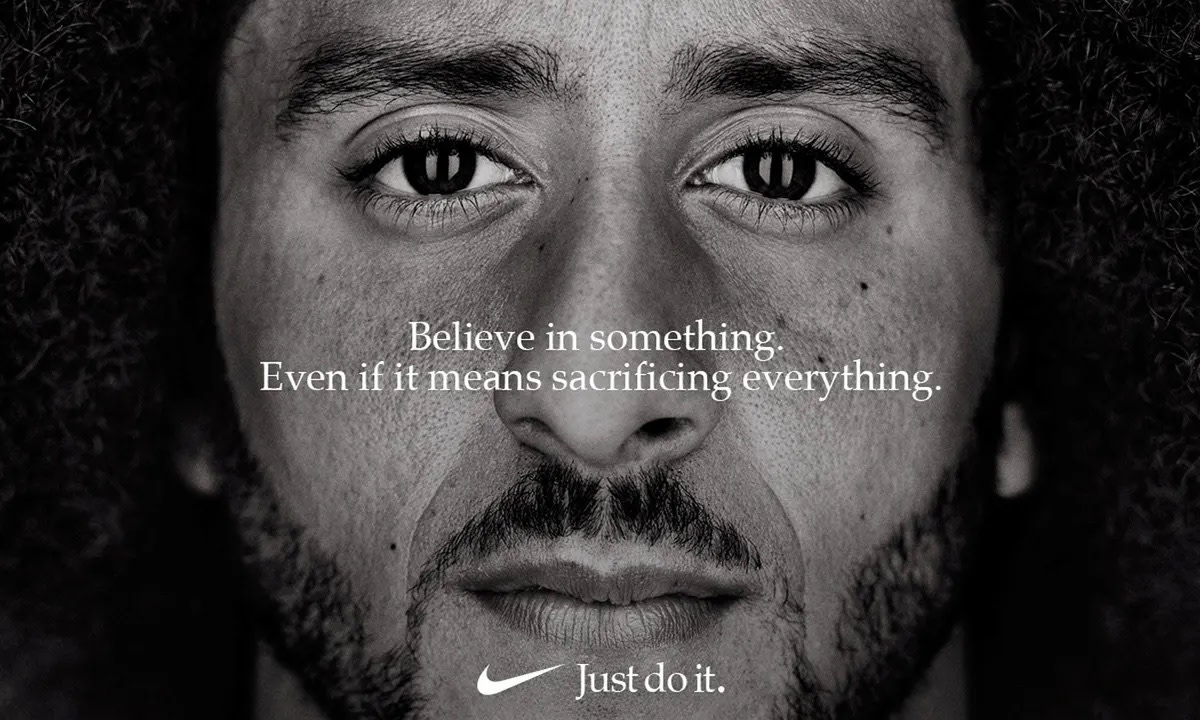To the uninitiated, advertising is full of Mad Men-esque mystery. But as a writer and creative lead, I'm here to tell you that advertising is just fancy persuasion. At its most fundamental, an ad is trying to get you to think, feel, or do something (usually, purchase a product).
Because ads are just a form of persuasion, they often take their cues from the world of rhetoric and communications—including concepts like ethos.
A little bit of rhetorical theory can unlock why some ads work and others fall flat. Here, we'll look at the value of ethos in ads and check out plenty of examples.
What is ethos in advertising?
Today, ethos usually refers to the general vibe or culture of a time or place—for example, you could say that the U.S. has an individualistic ethos. But for our purposes, we're looking at it as a form of persuasion.
The ancient Greeks are where we get a lot of our foundational theories around persuasive communication, and Aristotle in particular believed good rhetoric often took three forms:
Logos (appeal to intellect). Logos is all about laying out the rational argument for your audience—you might notice it has the same root as the word "logical."
Pathos (appeal to emotion). Pathos is all about evoking an emotional response in the audience—think of those ASPCA ads set to Sarah McLachlan songs.
Ethos (appeal to authority). Essentially, ethos means credibility. It originally referred mostly to moral credibility, but today—and especially in advertising—it's persuasion via expertise or authority.
In short, ethos in advertising means that a brand is convincing the audience that they know what they're talking about—that you can trust them. Keep in mind that it's rare for an ad to rely solely on ethos—most are a blend of all three modes of rhetoric—but some lean on it more heavily than others.
I'll be the first to acknowledge that this is a very reductive explanation of logos, pathos, and ethos. But unless you plan on ditching your marketing gig for a PhD in rhetoric, it's enough to help you start incorporating ethos in advertising.
Why does ethos matter in ads?
I'm guessing the ancient Greeks didn't know a lot about advertising, but when it's used strategically, ethos can do a few things to make an ad more convincing.
It creates instant connection and trust with the audience. It gives them a reason to listen to the ad, instead of tuning it out as just another demand for their attention (and ultimately, their money). It's what makes the audience think, "Yeah, I believe that."
It clarifies the message. Ethos often makes the fundamental message of an ad clearer. For example, if you're advertising a new medication and feature a doctor in the ad, the underlying message is: "This medication is safe and effective."
It builds a loyal brand following. Ethos telegraphs reliability and credibility, which are important cornerstones of any successful brand with strong brand advocates.
Still not sure what ethos looks like in practice? Here are ten examples of ads that use ethos to lend credibility to a brand.
10 ethos ad examples
1. A classic celeb spot from Gatorade
Because ethos is an appeal to authority, one of the easiest ways to incorporate it into an ad is to feature a subject matter expert.
The Be Like Mike campaign is a classic example: Gatorade is a sports drink, so showing Michael Jordan—a world-famous athlete—instantly boosts the brand's credibility. It makes you think, "If Michael Jordan drinks Gatorade, it's probably good enough for me." Sure, you may not have a 48-inch vertical, but at least you can have the same taste in sugary drinks.
2. Almost any toothpaste ad ever made
You don't need to use a celebrity in order to demonstrate the credibility of a product. If you've ever seen an ad for toothpaste, you've seen ethos at work: by saying 9 out of 10 dentists recommend their product, the brand is using ethos to build trust with the audience. If you can't rely on the expertise of a dentist to pick your toothpaste, how else would you decide?
This specific ad—which is a little vintage, I'll admit—goes a step beyond that generic endorsement. It specifically calls out clinical research, which feels like a more robust source of credibility than a simple claim that dentists like the product.
Well over half a century later, we're still using ethos in toothpaste ads. If it works, it works.
3. A vintage ad from Camel
If we're going to talk about ethos in advertising, we have to contend with the fact that it's not always used for good purposes. Cigarette companies like Camel have long relied on ethos in their ads, even after evidence began to show that smoking isn't healthy at all.
Despite the deceitful practices of Big Tobacco, vintage cigarette ads like this one are still a great example of ethos at play. Unlike the toothpaste ad we just looked at, this ad doesn't only appeal to the scientific knowledge of doctors—it also appeals to their social authority as respected community figures who often work long days.
4. A moving PSA from the CDC
I want to briefly touch on this next ad because it's an important complement to the Camel ad we just looked at. As nicotine advertising has become more regulated, the balance of ethos has swung in the opposite direction. Now, it's public health agencies that rely on ethos to dissuade people from smoking.
This ad from the CDC is a perfect example: It tells you about the consequences of smoking—from someone who's actually experiencing them.
5. The most interesting ad in the world from Dos Equis
One of the most compelling aspects of ethos is that the authority you're invoking doesn't always need to be real.
Take Dos Equis' iconic ad campaign, The Most Interesting Man in the World. For this campaign, the brand invented a character who, as the campaign title indicates, is the most fascinating guy on the planet. He's well-traveled, cultured, popular—and as the original spot declares, sharks have a week dedicated to him. He's a compelling person, one many folks might want to emulate; so when he says he prefers Dos Equis, it means something.
6. A subtle spot from Apple
Ethos doesn't always have to be obvious. You don't necessarily need to bring out a recognizable celebrity or tout statistics to incorporate ethos into an ad.
Apple's famous PC vs. Mac commercials are a great example. Just look at the way each brand is represented: the Mac guy is dressed in approachable, modern clothes, but the PC looks dowdy, overly formal, and out-of-touch. You instantly believe that Macs are more user-friendly because the Mac guy seems like an authority on what user-friendly means—all because of a few wardrobe choices.
7. A compelling car ad from Volkswagen
Sometimes ethos is about establishing the brand as the expert, rather than relying on a third party to establish credibility.
This Volkswagen ad uses a slightly different tactic than the Apple ad we just looked at: it uses wordplay and history. In German, "volk" means "people"—so the brand name Volkswagen literally translates to "the people's car." (I should note that, like tobacco brands, Volkswagen has a troubled and troubling history.) By leaning into that historic name, Volkswagen establishes itself as the authority on moving lots of people around.
8. An aspirational ad from Nike
In 2016, football player Colin Kaepernick made headlines for refusing to stand during the national anthem, in protest of racial injustice. His protest immediately fueled polarizing cultural discourse, with the NFL allegedly colluding to exclude him from the league.
A couple years later, Nike launched their now-famous Dream Crazy campaign. This campaign is a gorgeous example of ethos, because it's not using Kaepernick's skill as an athlete to build credibility: it's using his strength of character (the original meaning of ethos). It's not Kaepernick's skill that makes him trustworthy but his willingness to stand by his beliefs.
9. A fun Taylor Swift spot from Coke
Imagine Dos Equis' campaign, but with a real person. That's exactly what this Diet Coke commercial offers up. The ad invites the audience to "Stay Extraordinary"—and who's better to pass that invitation along than Taylor Swift, possibly the most famous person on the planet?
10. A balanced ad from Duracell
Like I said earlier, ethos doesn't always have to be an explicit appeal to authority—those can get old, fast. This TV spot from Duracell is a nice balance: it combines ethos ("Firefighters trust us, so you can trust us, too") and pathos ("Don't you love the people who willingly risk their lives to keep you safe?").
Ethos is powerful, but it needs to be balanced
While it's a form of persuasion, an appeal to authority is also traditionally considered a logical fallacy. That's why any ethos in an ad needs to feel authentic and believable. It also needs to be balanced with other forms of persuasion. If you're in the business of crafting ads, keep that in mind: magic lies at the intersection of ethos, logos, and pathos.
Want to have more time to develop thoughtful, creative ads? Put your routine tasks on autopilot with Zapier. Learn more about how to optimize your ads with automation, or get started with one of these pre-made templates.
Add new HubSpot contacts to Google Ads Custom Lists
Zapier is the leader in workflow automation—integrating with 6,000+ apps from partners like Google, Salesforce, and Microsoft. Use interfaces, data tables, and logic to build secure, automated systems for your business-critical workflows across your organization's technology stack. Learn more.
Related reading:









